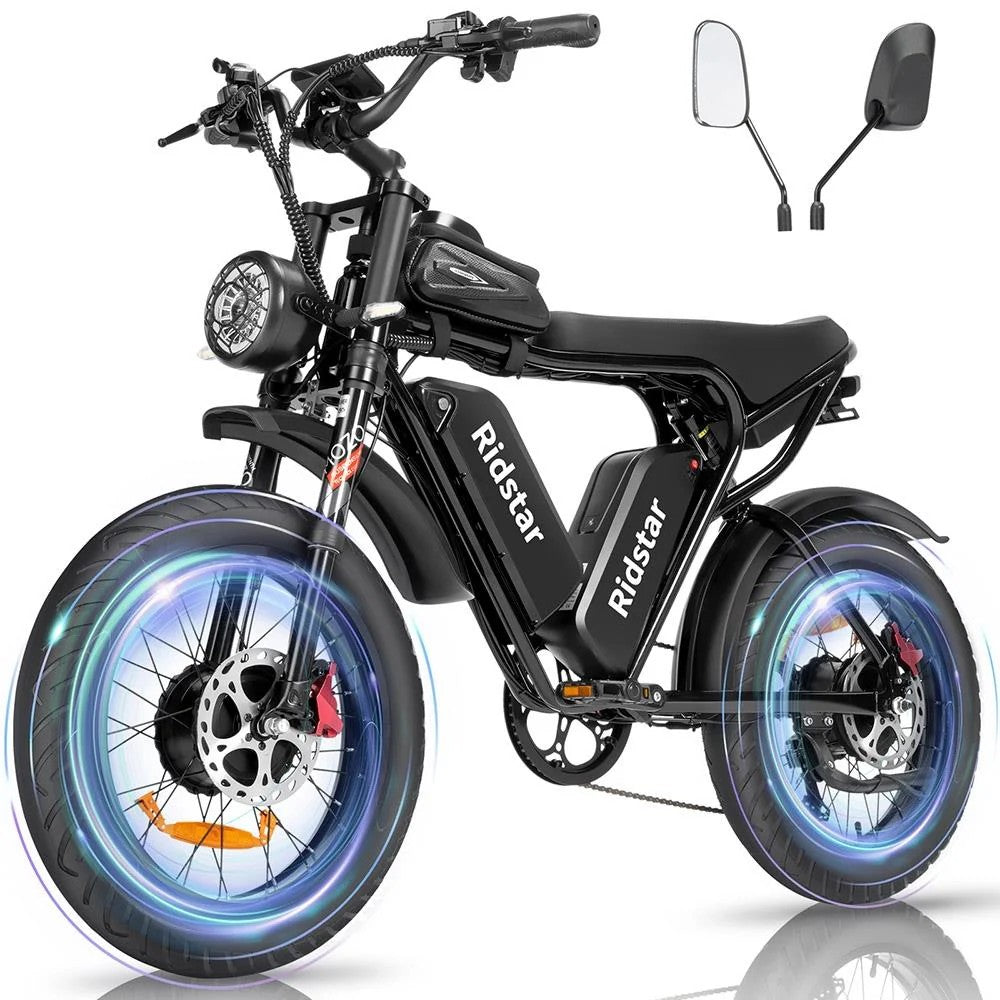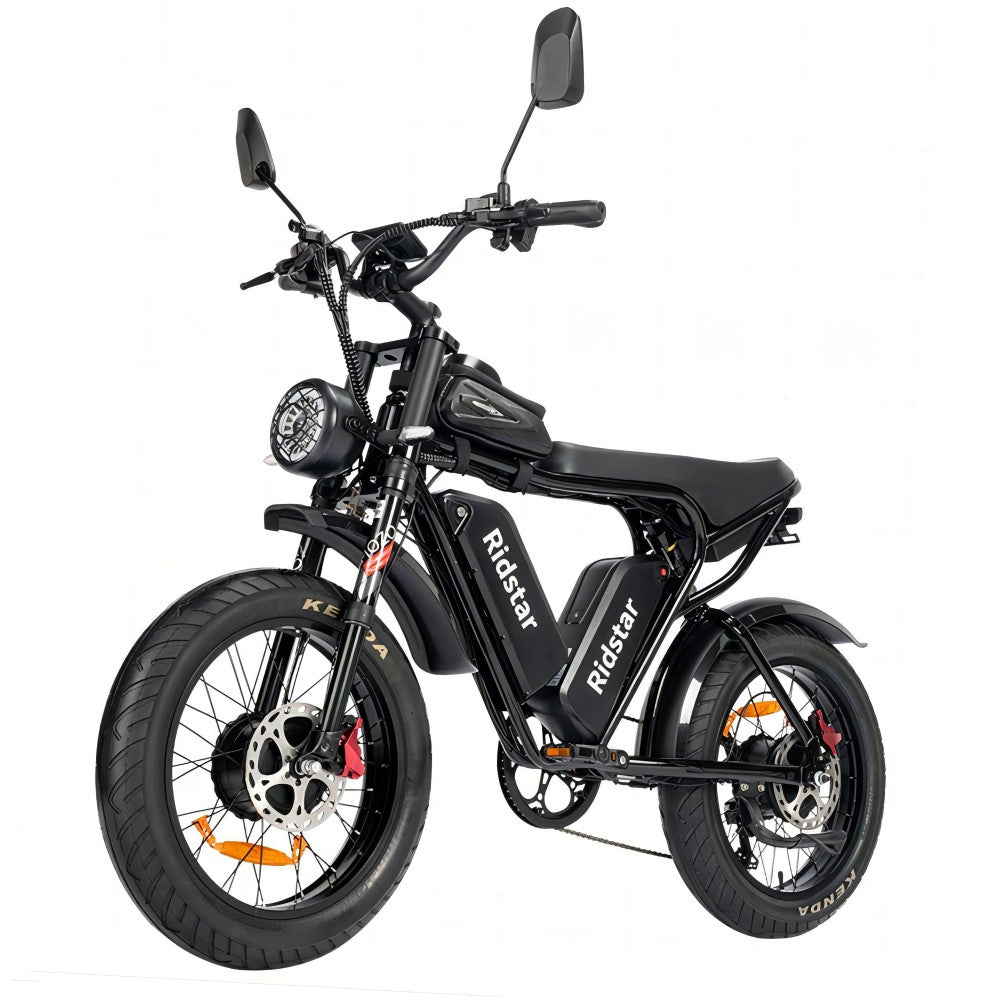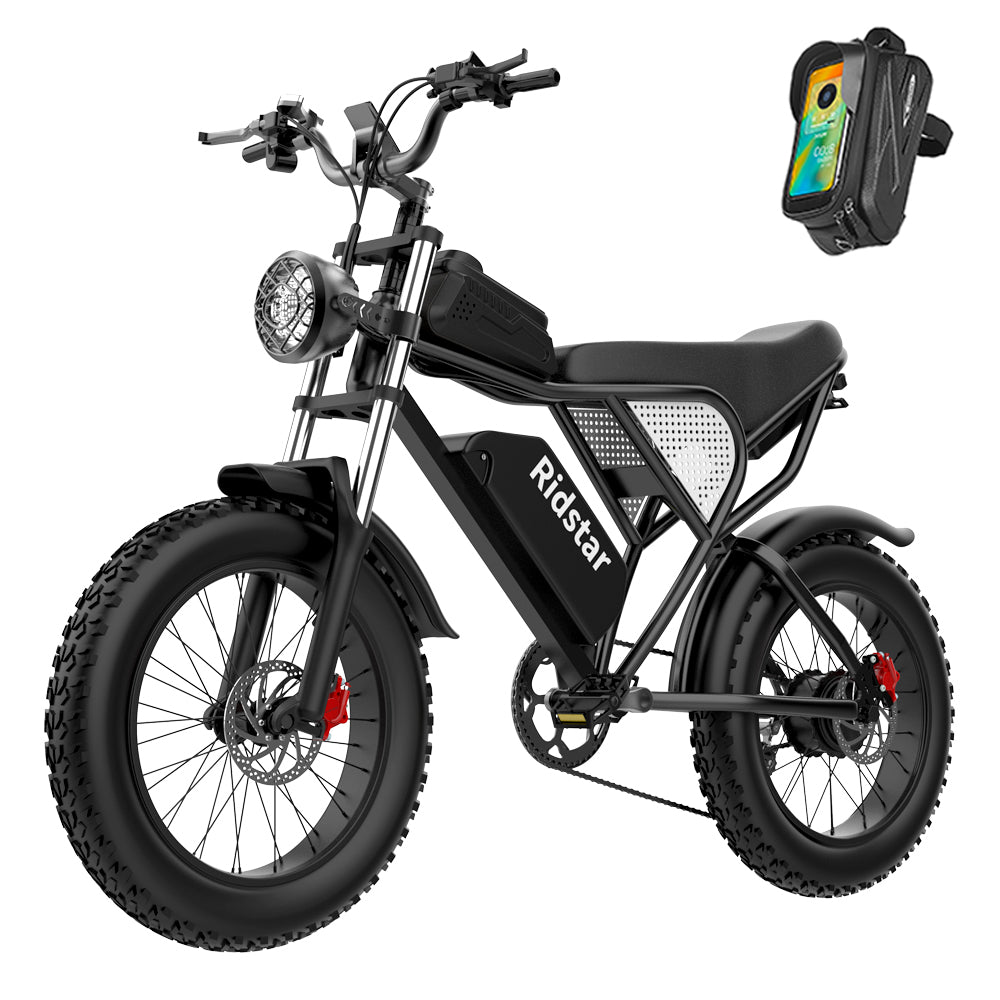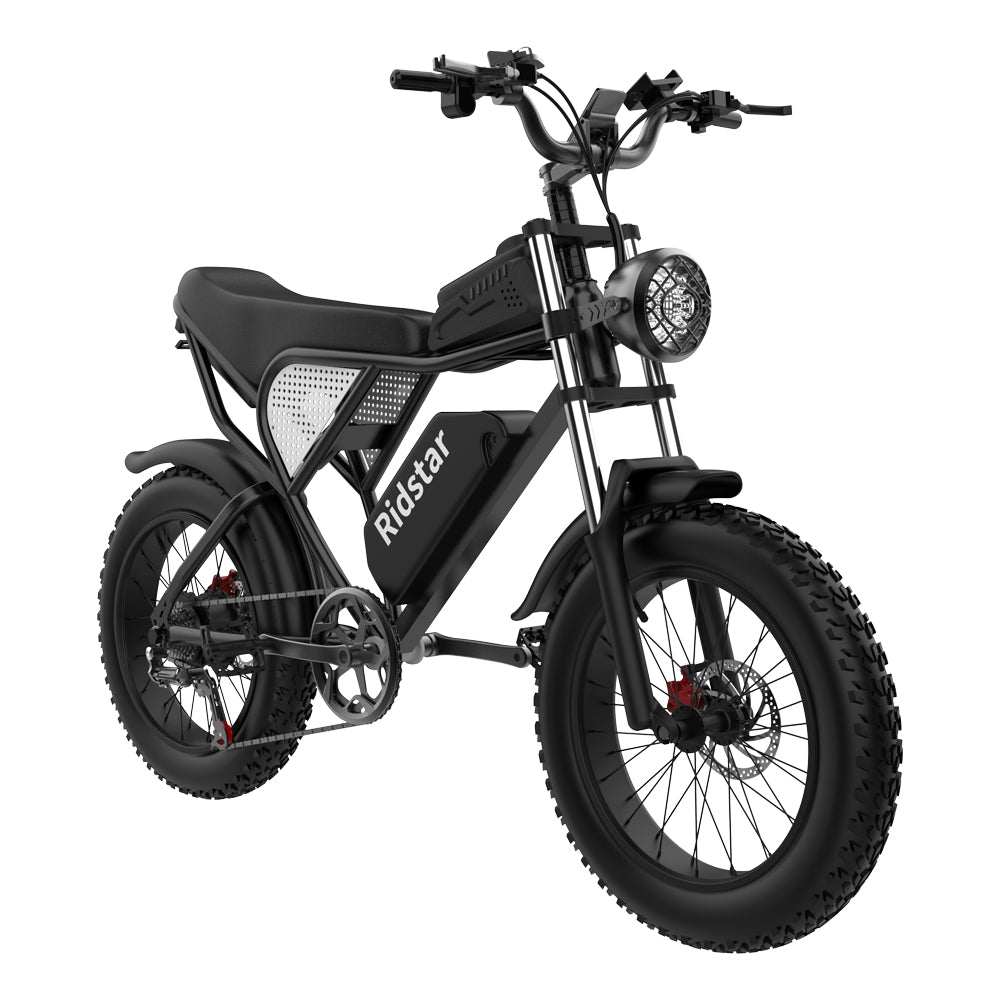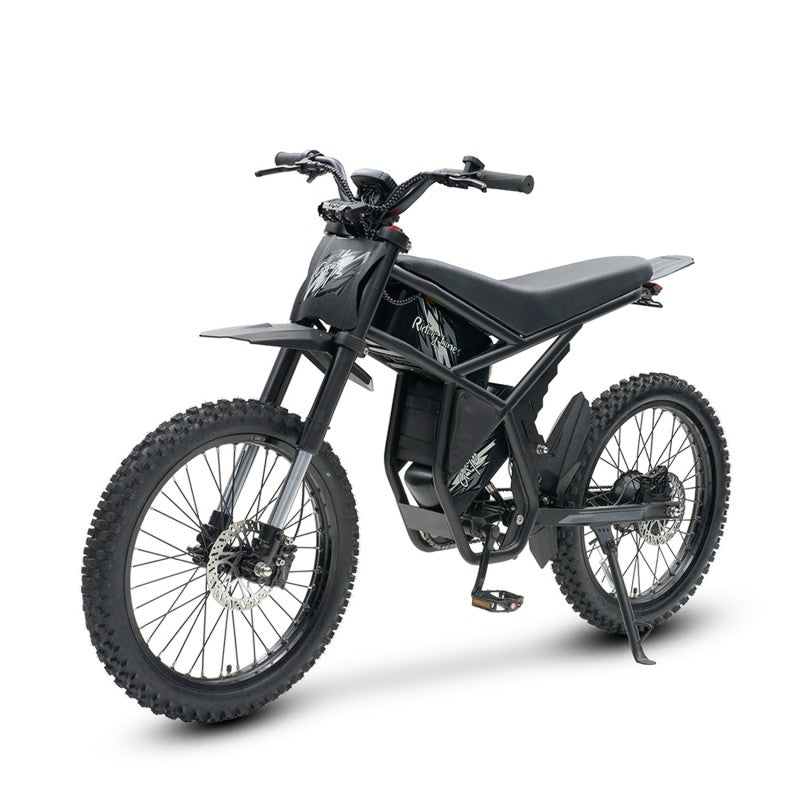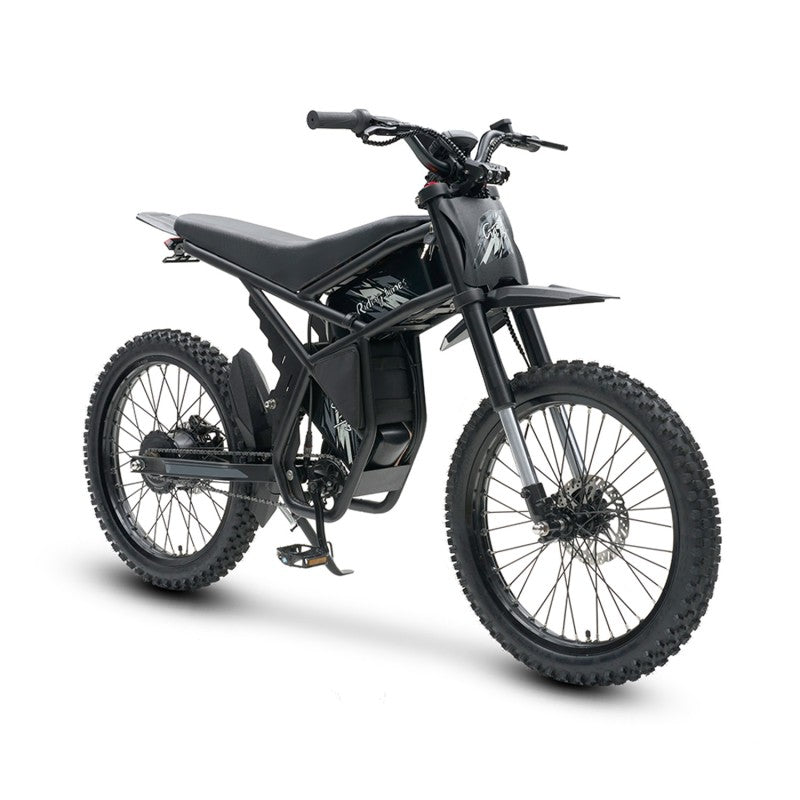Introduction
Over the past twenty years, the popularity of electric bikes in the United States and Europe has surged year after year. In the U.S., roughly 1 in every 50 people owns at least one electric bike, and in Europe, the adoption rate is even higher—about 1 in every 20 individuals has an e-bike of their own. Whether you’re a city commuter, a weekend leisure rider enjoying family outings, or an eco-conscious consumer, more and more people are turning to these efficient, green transportation solutions.
Electric bikes (or e-bikes) are favored not only because they offer a low-carbon, environmentally friendly way to get around but also because they can dramatically reduce your daily transit costs. In electric-only or pedal-assist mode, they double as a traditional bicycle—giving you the exercise benefits—while boosting your commute efficiency. You no longer have to worry about fluctuating gas prices, endure crowded public transit, or depend on a car for every short trip.
Of course, the market is now flooded with electric bikes of various types, configurations, and brand-specific positioning. For newcomers, the choices can quickly become overwhelming. That’s why we’ve put together this ultimate guide: to help you clarify your purchasing process from start to finish and select an electric bike that perfectly matches your lifestyle.
1. Understanding Types of Electric Bikes
The first step in choosing an electric bike is identifying which style best suits your intended use. Each type emphasizes different structural, performance, and design characteristics.
1.1 Fat Tire Electric Bike
Ideal for: Rough terrain, beaches, snow, and hilly or off-road environments.
Keywords: fat tire electric bike, fat e-bike
Fat tire electric bikes feature extra-wide tires—typically 4.0 to 4.5 inches in width—that deliver remarkable traction and off-road capability. Their beefy tires and robust frames make them perfect for riding on sand, snow, gravel, or rocky trails. Not only do they look bold and aggressive, but they also provide a stable, comfortable riding experience—ideal for both fitness enthusiasts and daily commuters tackling uneven surfaces.
Many fat tire e-bikes pair these wide tires with front suspension forks or full-suspension systems, allowing you to glide effortlessly over bumps and rugged terrain. If you live near mountainous or back-country roads, a fat tire e-bike is an excellent choice. Its broad tires and suspension setup ensure a smooth, secure ride. Thanks to the electric motor, you’ll feel confident even when confronting loose surfaces like sand or small stones.
See All Fat Tire Electric Bikes – Click Here!
1.2 Foldable Electric Bike
Ideal for: Urban apartment dwellers, commuters who use multiple transit modes, and those with limited storage space.
Keywords: foldable electric bike, folding e-bike, portable electric bike
If you live in a city apartment or frequently need to bring your bike onto buses, subways, or trains, a foldable electric bike is a brilliant solution. Lightweight and compact, these e-bikes collapse down to a fraction of their extended size, making storage and transport incredibly convenient. Many models use aluminum alloy frames engineered for strength and minimal weight, so you can carry or stow your bike with ease—no more worrying about a garage filling up or struggling with a heavy bike.
Foldable e-bikes are particularly popular among urban commuters, students, and anyone who values space efficiency without sacrificing performance. When unfolded, they ride almost as smoothly as a standard electric bike, with the added benefit of portability.
See All Foldable Electric Bikes – Click Here!
1.3 Moped-Style Electric Bike
Ideal for: Urban riders seeking a retro look, comfortable seating, and a motorcycle-like experience without gas, licenses, or heavy maintenance.
Keywords: moped style electric bike, retro electric bike, electric moped
Blending the classic aesthetic of a retro moped with modern zero-emission electric power, moped-style e-bikes combine style, convenience, and eco-friendly performance. These bikes usually feature extended bench seats, rigid (non-folding) frames, and sometimes decorative details reminiscent of vintage scooters. While not as compact as foldable models, their plush seating and solid build offer exceptional comfort—especially for riders of average to taller heights.
Designed for city cruising, short errands, or leisurely rides, moped-style electric bikes boast strong motors (often 500W or more) for quick acceleration and smooth highway-style riding. They require no gasoline, no motorcycle license in most locales, and minimal routine upkeep—making them an excellent choice for a stylish, fuss-free commute.
See All Moped-Style Electric Bikes – Click Here!
1.4 Step-Through Electric Bike
Ideal for: Riders of all ages, including women in skirts, seniors, and anyone seeking easy on/off access.
Keywords: step through electric bike, low step electric bike, easy-mount e-bike
Step-through electric bikes eliminate the traditional top tube or feature a very low mounting point—essentially forming an open “U” or slanted frame. This design allows you to step down into the saddle rather than swinging your leg over, which is particularly convenient if you wear a skirt, suit, or carry items in a bag. Because you don’t need to lift your leg high, mounting and dismounting are effortless.
These e-bikes suit riders with varying flexibility or mobility concerns—making them especially popular among older adults or anyone looking for a more graceful, accessible ride. Additional benefits include:
-
Easy Stops: With a low step-through frame, you can place both feet flat on the ground at a red light or in heavy traffic, enhancing safety.
-
Comfortable Riding: Often paired with upright riding geometry, cushioned saddles, and optional suspension, they ensure a relaxed posture.
-
Versatility: Great for casual city rides, grocery runs, or running errands—no more awkward awkward balancing at traffic lights.
See All Foldable Electric Bikes – Click Here!
1.5 Commuter Electric Bike
Ideal for: Daily urban commuting, office workers, and practical everyday riders.
Keywords: commuter electric bike, urban commuter e-bike, city electric bike
Commuter electric bikes are purpose-built to tackle everyday city life. Stripping away unnecessary racing or long-distance designs, they focus on practical features that make your morning and evening ride as seamless as possible:
-
Lightweight Frame + Step-Through Option: Many commuter e-bikes combine a low-step frame or slanted top tube with lightweight materials, allowing for easy mounting and frequent stops.
-
Fenders & Mudguards: Standard full-coverage fenders keep road spray and mud off your clothes—crucial for rainy days.
-
Rear Rack & Front Basket Compatibility: Integrated mounting points for rear racks and front baskets offer ample space to carry backpacks, briefcases, groceries, or even small packages.
-
LED Lighting & Reflectors: Bright, long-lasting front LED headlights and pronounced rear brake lights ensure you stay visible during rush hours.
-
Comfort-Oriented Design: Wider, cushioned saddles; adjustable handlebars; and sometimes front suspension (spring or hydraulic) dampen road vibrations, reducing rider fatigue.
-
Low-Maintenance Components: Simple drivetrains, belt drives (on some models), and puncture-resistant tires minimize upkeep.
-
Battery Display & Range Readout: A clear battery level indicator keeps you informed of remaining range, avoiding surprises on your ride home.
In essence, a commuter electric bike is your dependable “two-wheeled coworker,” designed to ease the everyday pain points—making each departure and arrival feel smoother, faster, and more enjoyable.
See All Foldable Electric Bikes – Click Here!
2. Key Components to Consider
After you’ve chosen the type of e-bike you want, the next step is to dive into the critical technical components that determine ride quality, performance, and convenience.
2.1 Motor Power & Type
Motor wattage is one of the most important specs for any electric bike. Common power options include:
-
250W–500W: Ample for flat-terrain city commutes.
-
750W–1000W+: Better for hilly terrain, heavier riders, or off-road excursions.
-
Dual-Motor Bargains: Some models feature two motors (one in each hub), doubling torque. These are especially fun on steep hills or snow.
Motor Types:
-
Hub Motors: Mounted inside the wheel hub (rear or front). They’re cost-effective and easy to maintain. Perfect for flat-terrain commuting or leisure rides.
-
Mid-Drive Motors: Located at the bottom bracket (crank area). They offer superior torque distribution, balanced weight, and improved hill-climbing performance. Although pricier, mid-drive e-bikes handle inclines and rough terrain with smoother power delivery.
When selecting motor power, consider:
-
Average Terrain: If you live in a flat city, a 250W–500W hub motor will be enough. If you face steep hills regularly, step up to a 750W mid-drive.
-
Rider Weight & Cargo: Heavier riders or those carrying loads require more torque, so opt for a higher-wattage motor.
-
Legal Restrictions: Some regions limit motor power (e.g., EU limits to 250W). Always verify local regulations before choosing.
250W Electric Bike list– Click Here!
250W-500W Electric Bike list– Click Here!
500W-1000W Electric Bike list– Click Here!
1000W-2000W Electric Bike list– Click Here!
2000W+ Electric Bike list– Click Here!
2.2 Battery Capacity
For most e-bike buyers, battery capacity is the top priority. It directly impacts how far you can ride on a single charge (range).
-
Voltage (V): Common options are 36V or 48V systems (sometimes 52V or 60V on high-end models).
-
Capacity (Ah): Measured in amp-hours—often between 10Ah and 20Ah in commuter and off-road models.
-
Watt-Hours (Wh): Calculated as V × Ah (e.g., 48V × 13Ah = 624Wh). Higher Wh means longer potential range.
As a general guideline: a 48V 13Ah battery paired with a 500W motor can deliver roughly 20–40 miles (32–64 km) of range, depending on factors like rider weight, terrain, speed, and level of pedal-assist use.
To choose the right battery:
-
Estimate Daily Mileage: If your round-trip commute is 15 miles, a 500–624Wh battery is sufficient.
-
Factor in Hills & Cargo: Hilly routes or extra weight reduce range, so opt for a higher-capacity battery (e.g., 48V 15Ah or above).
-
Charging Convenience: Consider removable batteries for easy indoor charging, especially if you live in an apartment.
Under 12Ah Electric Bike list– Click Here!
13Ah-20Ah Electric Bike list– Click Here!
21Ah-30Ah Electric Bike list– Click Here!
31Ah-45Ah Electric Bike list– Click Here!
45Ah+ Electric Bike list– Click Here!
2.3 Wheel Size
The diameter of an e-bike’s wheels affects handling, acceleration, and comfort.
-
14–16 inches: Very compact. Ideal for children, shorter riders (under 5’0”), or as a folding e-bike with tight turning radius.
-
20 inches: Common in foldable electric bikes. Agile for urban weaving; folds down small for easy storage.
-
24 inches: Strikes a balance between agility and ride stability. Good for riders around 5’0”–5’6”.
-
26 inches: The classic mountain-bike size. Versatile for riders 5’3”–5’9”, offering more stability than 24″.
-
27.5 inches (650B): A golden ratio for off-road performance—better rollover capability than 26″ but more nimble than 29″.
-
29 inches: Favored by tall riders (5’11”+), these wheels roll over obstacles with ease and maintain momentum on rough trails. Best for off-road and cross-country riding.
Choose your wheel size based on:
-
Rider Height: Smaller wheels for shorter riders; larger wheels for taller riders.
-
Storage & Portability: If space is limited (e.g., in an apartment), a 20″ folding e-bike might be ideal.
-
Terrain: Off-road and trail riders often prefer 27.5″ or 29″, while urban commuters might be happiest with 24″ or 26″.
View All Products by Wheel Size - Click Here!
2.4 Brakes & Suspension
Safety and comfort depend heavily on how well your electric bike stops and absorbs shocks.
-
Brakes:
-
Mechanical Disc Brakes: Offer solid stopping power in dry conditions and cost less.
-
Hydraulic Disc Brakes: Provide the strongest, most responsive control and consistent performance in rain, mud, or downhill runs.
-
V-Brakes and Drum Brakes: Common on budget models but less effective in wet weather or steep descents.
-
-
Suspension:
-
Front Fork Suspension: Absorbs bumps on uneven roads—ideal for gravel paths, rough city streets, or light trail use.
-
Full Suspension (Front & Rear): Provides maximum comfort and control for mountain biking, downhill, or very bumpy routes. Look for adjustable travel lengths to match your riding style (from mild urban bumps to technical off-road runs).
-
Combining disc brakes with at least front suspension is often a “sweet spot” for many commuters who want predictable stopping power and a smoother ride on pothole-ridden city streets.
View All Full Suspension Ebike - Click Here!
3. Don’t Overlook Legal Regulations
Electric bike classifications and legal requirements vary significantly by country and region. Before purchasing, make sure you understand local laws to avoid fines, impoundment, or insurance issues.
3.1 United States: Three Classes of Electric Bikes
In the U.S., most states follow a three-class e-bike framework (though specifics can differ by state):
-
Class 1: Pedal-assist only (no throttle). Motor cuts out at 20 mph (32 km/h).
-
Class 2: Throttle-assisted, no higher than 20 mph.
-
Class 3: Pedal-assist only (no throttle) up to 28 mph (45 km/h). Note: Class 3 e-bikes are often restricted to bike lanes or shared paths, depending on local rules.
Additional requirements may include helmet laws, helmet age restrictions, or minimum rider age. Some states or municipalities require registration, a license plate, or a valid driver’s license. Always check your state’s Department of Motor Vehicles (DMV) website for precise details.
3.2 European Union: Stricter Standards
In the EU, regulations are generally more stringent:
-
Maximum Assisted Speed: 25 km/h (15.5 mph).
-
Maximum Motor Power: 250W.
-
Pedal-Assist Only: Throttle-only e-bikes are not typically classified as “pedelecs” and may fall under moped or light vehicle regulations—requiring registration, insurance, and a valid driving license.
-
Helmet & Registration: Many countries mandate helmets for all e-bike riders; some cities also require e-bike registration or a license plate.
-
Exceeding Limits: If your e-bike surpasses 250W or assists beyond 25 km/h, it’s considered a small moped or motorbike—subject to separate rules, insurance, and rider licensing.
Always verify your local city or national e-bike laws before purchasing, especially if you plan to ride in multiple jurisdictions.
4. Budget & Price Ranges
Electric bike prices vary widely—from a few hundred dollars to several thousand. Your budget dictates available features, component quality, and performance. Here’s a breakdown:
4.1 Entry-Level (< $1,000)
-
Target Buyer: Budget-conscious shoppers or first-time e-bike buyers.
-
Features:
-
Basic motors (250W–350W hub motors) and smaller batteries (e.g., 36V 10Ah).
-
Limited range (10–20 miles per charge).
-
Simplified components (V-brakes instead of disc brakes, basic suspension).
-
Heavier frames (steel or lower-grade aluminum).
-
-
Use Case: Short city commutes, flat terrain, beginners who want to test the e-bike lifestyle without a big investment.
4.2 Mid-Range ($1,000–$2,500)
-
Target Buyer: Most mainstream buyers seeking balanced performance and value.
-
Features:
-
More powerful motors (500W–750W, often hub or entry-level mid-drive).
-
Battery capacities around 48V 13Ah–15Ah (400–700 Wh), offering 30–50 miles of range.
-
Quality components: hydraulic or mechanical disc brakes, front suspension forks, decent derailleur drivetrains.
-
Lightweight aluminum frames.
-
-
Use Case: Daily commuter e-bikes, fitness-oriented rides, moderate off-road use. Ideal for riders who want reliability and decent performance without splurging on top-tier models.
4.3 High-End (>$2,500)
-
Target Buyer: Enthusiasts, heavy riders, or anyone demanding top performance, build quality, and premium features.
-
Features:
-
Lightweight frames (high-grade aluminum or carbon fiber).
-
High-torque mid-drive motors (750W–1,000W+) with advanced torque sensors.
-
Large-capacity lithium batteries (48V 15Ah–20Ah, 720–1,000 Wh), delivering 50–100 miles of range under pedal-assist.
-
Premium drivetrain components (Shimano Deore/XT), hydraulic disc brakes, advanced front or full suspension.
-
Smart features: smartphone integration, GPS tracking, customizable power modes, and display screens.
-
-
Use Case: Serious commuters, long-distance touring, challenging off-road trails, and riders who want every ounce of efficiency and durability.
When setting your budget, weigh how often you’ll ride, whether you need extra range, and how much gear (or passenger) weight you expect to carry. In most cases, a mid-range e-bike offers the best mix of value and performance for everyday riders.
Shop E-Bikes by Price Range:
▸ Under €800
▸ €800-€1499
▸ €1500-€1999
▸ €2000-€2999
▸ €3000+
5. Brand Recommendations Worth Considering
While hundreds of electric bike brands flood the market, these five have earned strong reputations for reliability, performance, and customer satisfaction:
-
Engwe
-
Specialty: Affordable folding fat tire electric bikes.
-
Why Consider: Exceptional value for wide-tire e-bikes—great traction, solid batteries, and foldable convenience. Perfect for riders who want a fat tire e-bike without breaking the bank. Engwe Electric Bicycle Series-Click Here!
-
-
Ridstar
-
Specialty: High-performance moped-style electric bikes.
-
Why Consider: Retro-inspired design with powerful motors (often 750W–1,000W), comfortable bench seats, and durable construction. Ideal for city cruising and short trips, combining style with function. Ridstar Electric Bicycle Series-Click Here!
-
-
Eahora
-
Specialty: Mid-to-high-end commuter and off-road e-bikes.
-
Why Consider: Known for long-range batteries (up to 60V 20Ah in some models), smooth ride geometry, and thoughtful human-centered design. Eahora’s lineup covers everything from fat tire commuter e-bikes to full-suspension off-roaders. Eahora Electric Bicycle Series-Click Here!
-
-
TTGO
-
Specialty: Budget-friendly conforming e-bikes optimized for compliance.
-
Why Consider: Focuses on producing e-bikes that meet legal requirements in major markets (U.S., EU), while still providing decent motors, battery life, and standard features. A solid choice for first-time buyers who want hassle-free compliance. TTGO Electric Bicycle Series-Click Here!
-
Of course, brand reputation is only one piece of the puzzle—match features, after-sales service, and local availability to your personal needs. Always test-ride if possible, read customer reviews, and double-check warranty coverage before committing. For more electric bicycle brands, please click here!
Conclusion
Selecting the right Electric Bike is not just a purchase—it’s an upgrade to your lifestyle. By understanding the different types (fat tire, foldable, moped-style, step-through, commuter), key technical components (motor power, battery capacity, wheel size, brakes, suspension), legal requirements, budget ranges, and top brands, you’re well-equipped to make an informed decision.
Before you buy, reflect on these questions: How many miles do I ride daily? Are there steep hills on my route? Do I need folding capability or extended range? What budget am I comfortable with? Once you’ve identified your primary use cases and priorities, you’ll be well on your way to choosing an e-bike that transforms your daily commute, elevates weekend adventures, and reduces your carbon footprint.
If you still have questions or need personalized recommendations, feel free to browse our curated selection of electric bikes or contact our customer support team. Your next adventure—or your daily commute refresh—could be as simple as clicking “Add to Cart” on your perfect new electric bike. Good luck, and enjoy the ride!











